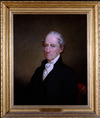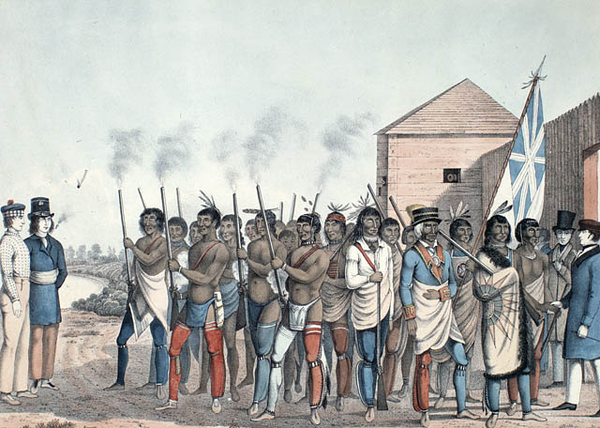- From the Red River Settlement to Manitoba (1812—70)
- Maps
- The Earl of Selkirk: The Colony’s Founder
- An Arduous Task, Marked by a Private War (1812—21)
- The Métis
- Indigenous Peoples
- Colonial Administration
- Maintaining Order and the Colony’s Defence
- Of Fur and Wheat: Subsistence and the Economy
- From Canoes to Railways: Transportation
- Life in Red River
- Missions and Religious Life
- Education, Health, and Social Assistance
- Arts and Culture
- The Press
- Intellectual and Scientific Life
- Winnipeg: The Emergence of an Urban Core
- Debating the Status of the Colony (1850—70)
- The Red River Rebellion and the Creation of Manitoba, 1869—70
- Suggested Readings on the Métis
Indigenous Peoples
Relations between the residents of Red River and Indigenous people were varied. Some First Nations, such as the Sioux [see John HALKETT], were feared as a threat to the colony during times of famine and conflicts over hunting grounds. In contrast, others, such as the Saulteaux (Ojibwa), and especially the leader PEGUIS, maintained good commercial relations with the Hudson’s Bay Company (HBC) and joined forces with the settlers against their long-time Sioux enemies:
“[Peguis] welcomed the first settlers brought to the Red River area by Lord Selkirk [
“On 18 July 1817 Peguis was one of five Saulteaux and Cree chiefs who signed a treaty with Lord Selkirk to provide an area for settlement purposes.… This land treaty was the first to be signed in western Canada.”
During the 57 years she spent at Red River, Sally ROSS, an Okanagan woman, was a valuable and appreciated intermediary:
“Sally Ross carried much of her Indian culture with her to Red River; there her concern for family relationships harmonized with that of the numerous Scots. Like many other Indian women… Sally was a link between Indian tribal life, the mixed-bloods, and the new white communities of traders. She became a devout Christian, the centre of a lively and intelligent household, and she was one of the women who contributed to the shaping of Manitoba society.”
The following lists give biographies that provide additional information on the First Nations who left their mark on the evolution of the colony and the relationships between Indigenous people and whites during the 1812–70 period.






